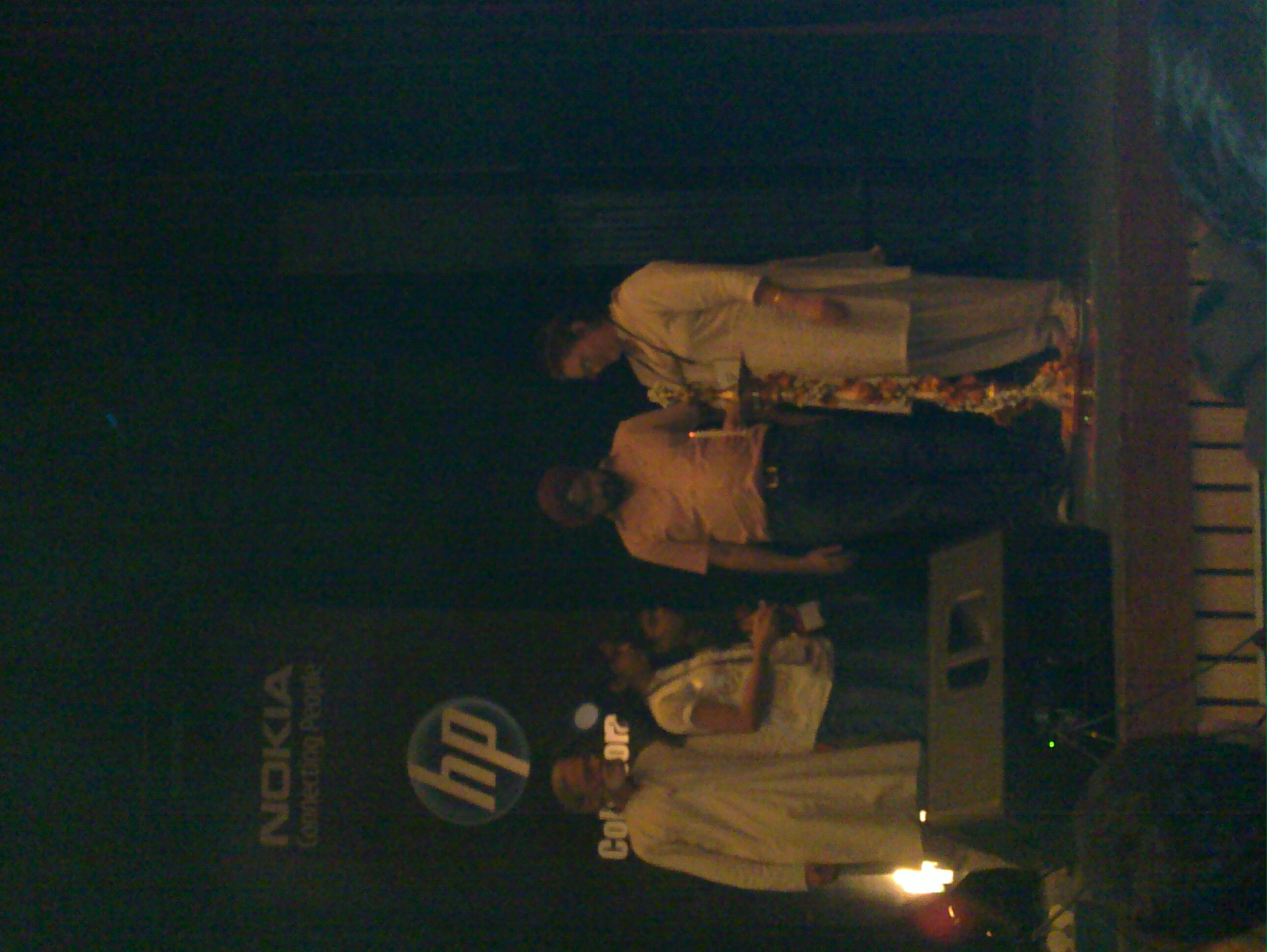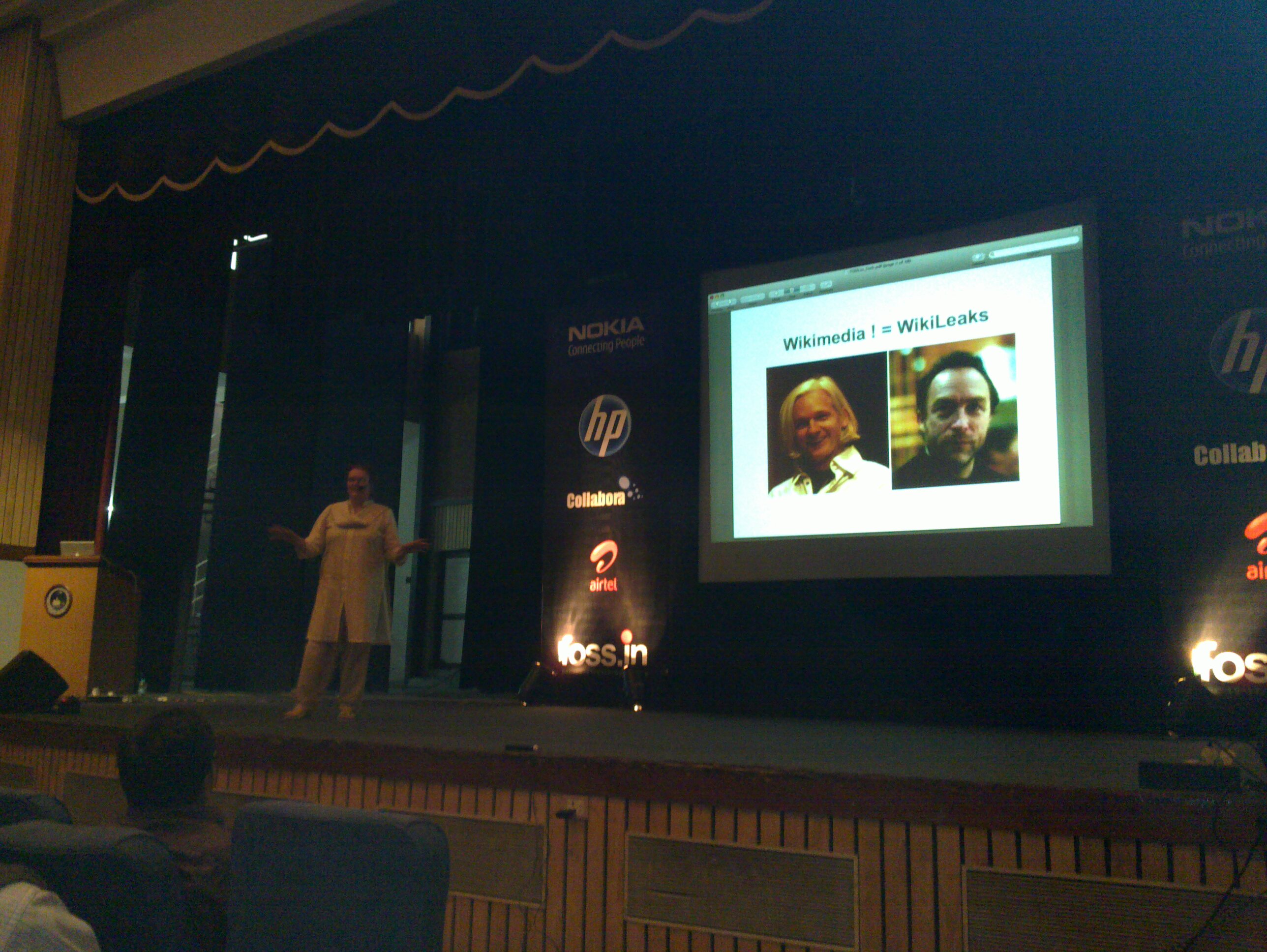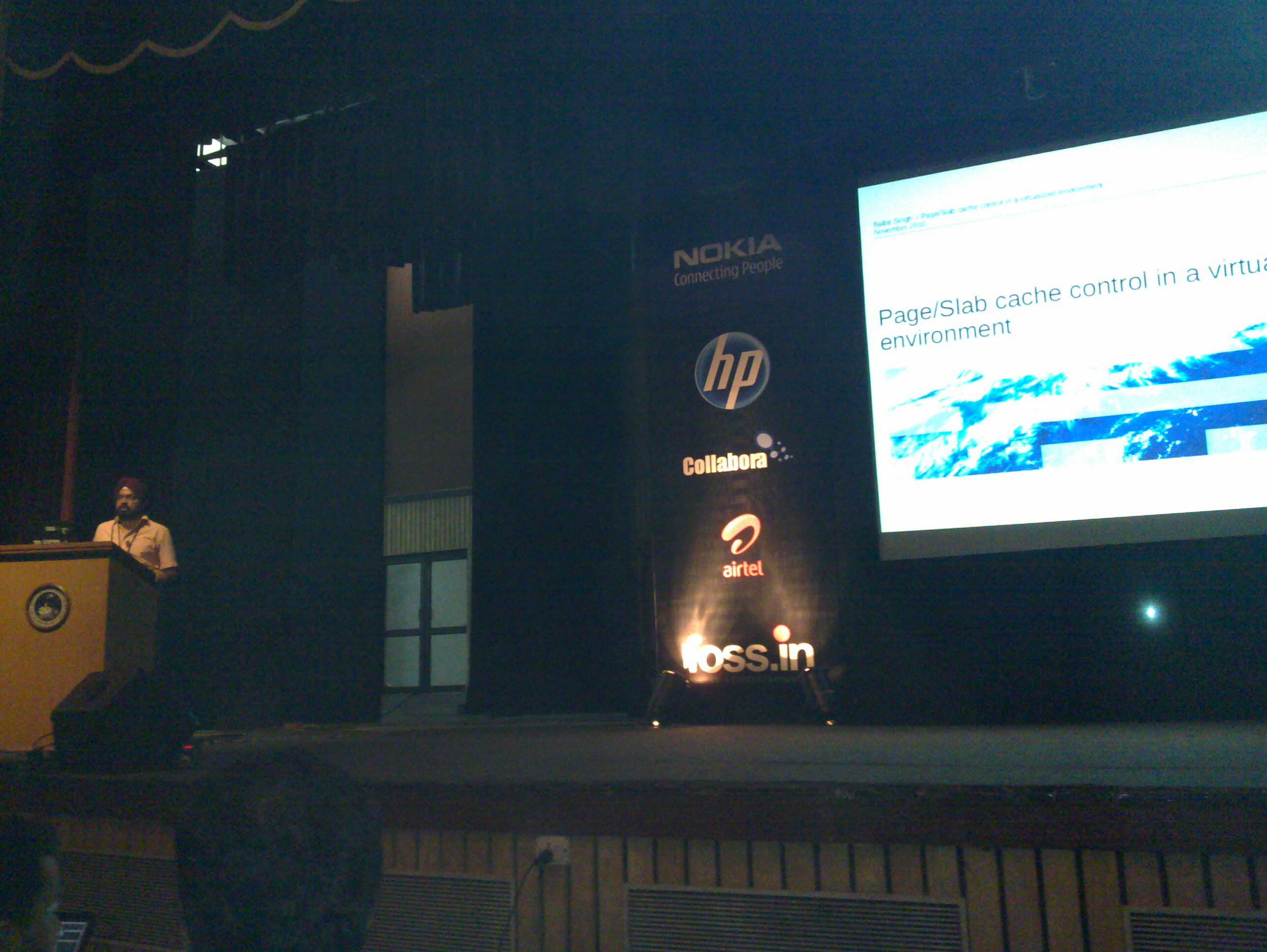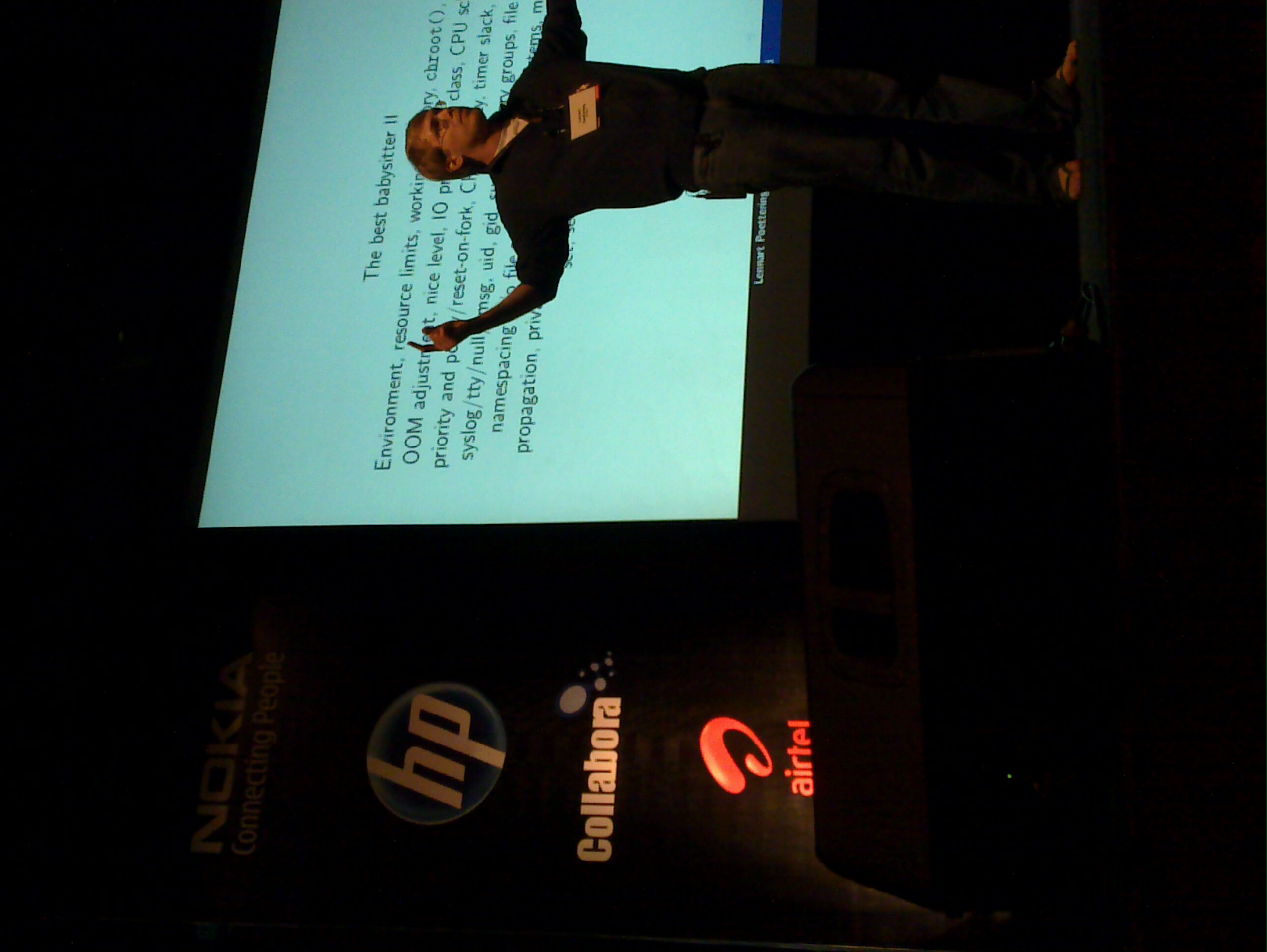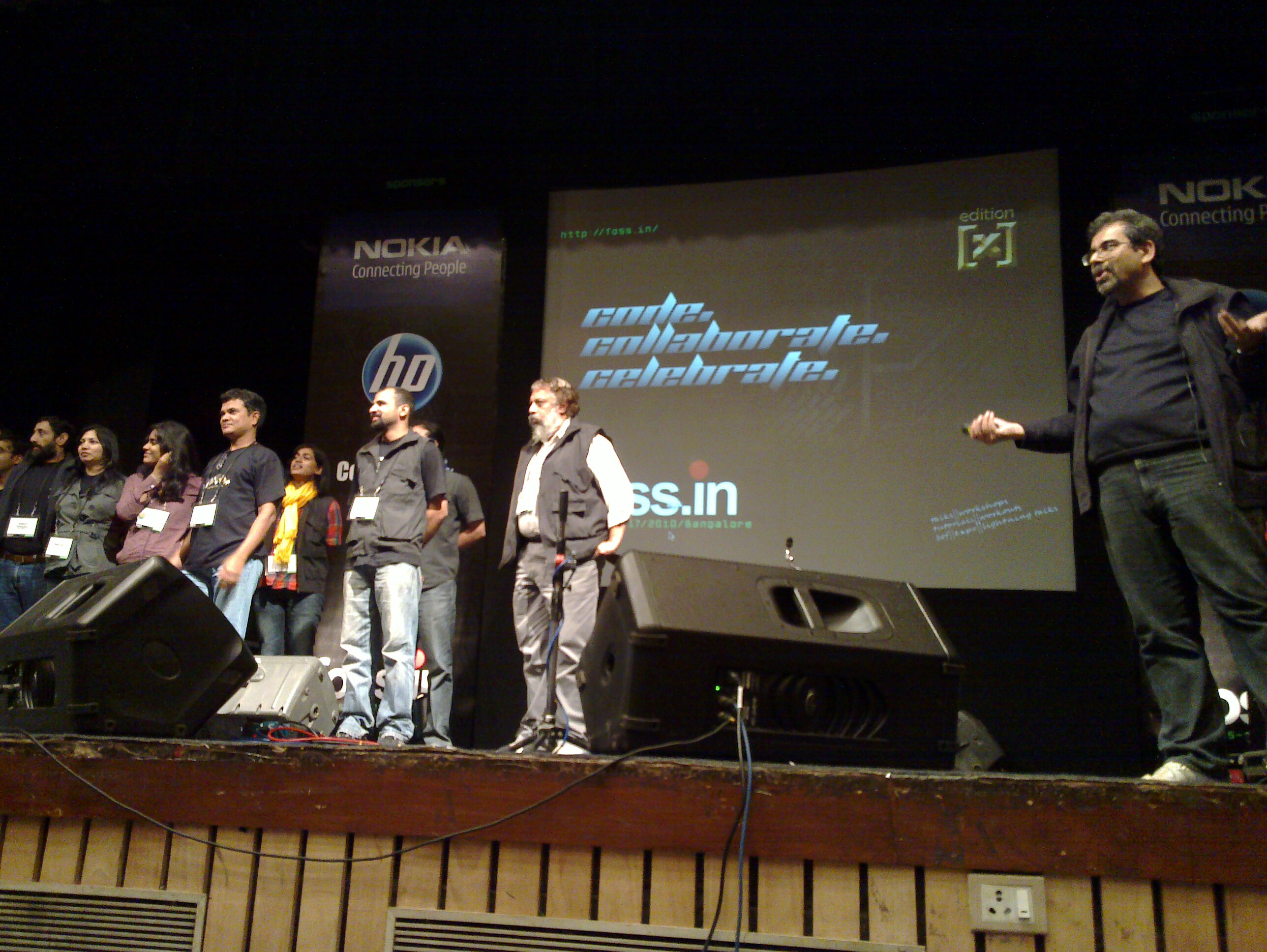Uh, I totally forgot to blog about a funny thing that happened almost a year ago which I just mentioned slightly *blush*. So you probably know this Internet thing and if you’re one of the chosen and carefully gifted ones, you confused it with the Web. And if you’re very special you do this Twitter thing and expose yourself and your communications pattern to some dodgy American company. By now, all of the following stuff isn’t of much interest anymore, so you might as well quit reading.
It all happenend while being at FOSS.in. There was a contest run by Nokia which asked us to write some cool application for the N900. So I did. I packaged loads of programs and libraries to be able to put the wireless card into monitor mode. Then I wiretapped (haha) the wireless and sniffed for Twitter traffic. Once there was a Twitter session going on, I sniffed the necessary authentication information was extracted and a message was posted on the poor user’s behalf. I coined that Pwnitter, because it would pwn you via Twitter.
That said, we had great fun at FOSS.in, where nearly everybodies Twitter sessions got hijacked 😉 Eventually, people stopped using plain HTTP and moved to end to end encrypted sessions via TLS.
Anyway, my program didn’t win anything because as it turned out, Nokia wanted to promote QML and hence we were supposed to write something that makes use of that. My program barely has a UI… It is made up of one giant button…
Despite not getting lucky with Nokia, the community apparently received the thing very well.
So there is an obvious big elephant standing in the room asking why would you want to “hack” Twitter. I’d say it’s rather easy to answer. The main point being that you should use end to end encryption when doing communication. And the punchline comes now: Don’t use a service that doesn’t offer you that by default. Technically, it wouldn’t be much of a problem to give you an encrypted link to send your messages. However, companies tend to be cheap and let you suffer with a plain text connection which can be easily tapped or worse: manipulated. Think about it. If the company is too frugal to protect your communication from pimpled 13yr olds with a wifi card, why would you want to use their services?
By now Twitter (actually since March 2011, making it more than 6 month ago AFAIK) have SSL enabled by default as far as I can tell. So let’s not slash Twitter for not offering an encrypted link for more than 5 years (since they were founded back in 2006). But there are loads of other services that suffer from the very same basic problem. Including Facebook. And it would be easy to adapt the existing solution stuff like Facebook, flickr, whatnot.
A noteable exception is Google though. As far as I can see, they offer encryption by default except for the search. If there is an unencrypted link, I invite you to grab the sources of Pwnitter and build your hack.
If you do so, let me give you an advise as I was going nuts over a weird problem with my Pwnitter application for Maemo. It’s written in Python and when building the package with setuptools the hashbang would automatically be changed to “#!/scratchbox/tools/bin/python“, instead of, say, “/usr/bin/python“.
I tried tons of things for many hours until I realised, that scratchbox redirects some binary paths.
However, that did not help me to fix the issue. As it turned out, my problem was that I didn’t depend on a python-runtime during build time. Hence the build server picked scratchbox’s python which was located in /scratchbox/bin.

